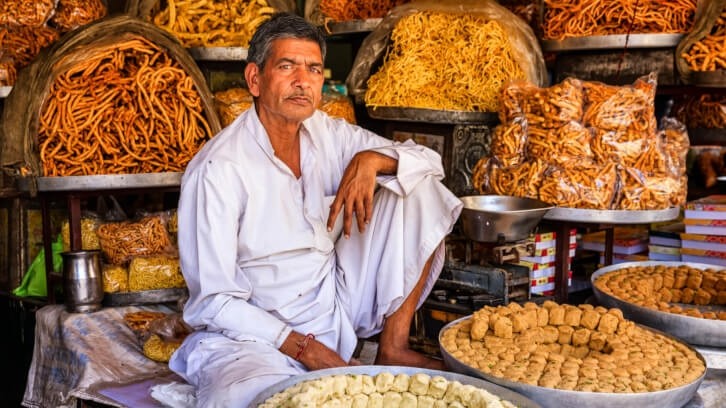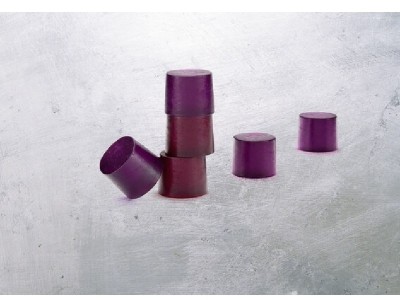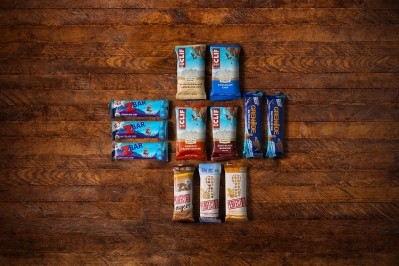Should brands look to India for novel flavour inspiration?

India is a tale of two confectionery markets. The western segment, as described by investment firm Aavishkaar Capital is highly organised and dominated by global multinationals such as Nestlé SA, Mondelēz International and Perfetti Van Melle. But it’s the other half which is deemed largely disorganised, with products sold unbranded and loose that take the lion’s share ($10bn) of the industry’s $17 billion reported value. It’s here where the creative magic happens and where the term ‘desi’ comes into play.
Desi refers to the people and culture of the Indian subcontinent and more specifically something regional. In a confectionery context it refers to a rich array of revered local ingredients such as jaggery, jamun, cardamom and saffron that spark a nostalgic reminder of the country’s people and places and products.
Desi flavour in mithai
Small mithai manufacturers (mithai are a sweet confection primarily made from ingredients such as flour, milk, sugar, nuts, and ghee) have long included desi flavours in their sweet ranges which appeals to today’s consumers’ appetite for adventurous sweet treats.
Research plays this out with a Mintel survey from 2023 revealing that almost four-fifths (79%) of Indian consumers say they are more likely to choose sweet and bakery products if they can access more adventurous flavours.
Desi ingredients that are seasonal are likely to be similarly popular. “Introducing product innovation that features seasonal flavours can be a good route to spark new interest and attract more consumers,” said Dr Anamika Banerji, Food and Drink Analyst, Mintel Reports India. Specifically, seasonal fruits, including jamun and mango, and sweet goods like carrot halwa, are popular desi flavours for packaged sweet bakery products.
Indian confectioners using desi flavours
It's not just in mithai that desi flavours are trending. In the start-up space chocolate and biscuit SMEs are experimenting too. Open Secret’s chocolates (sweetened with jaggery), Max Protein’s cookies and biscuits (which include locally sourced desi grains ragi and Bengal gram) and Bebe Burp’s cookies (which have ragi and ghee as key ingredients) are among the brands leading the way. Meanwhile, riffing on popular Indian dessert soan papdi, local brand Bombay Sweet Shop has launched its Indie Bar, which also contains pepper caramel, coconut fluff and dark chocolate.
Chocolatier Kocoatrait’s Madras Collection contains cardamom, ghee, moong lentils and jaggery to produce its Sakkarai Pongal-flavoured chocolate, reflective of the South Indian sweet festival food which it is named after. The brand’s Mor Miligai (Green Chilli) chocolate bar contains 70% dark chocolate. Curd from Tamil Nadu, an Indian state, is marinated in sun-dried green chillies to achieve the chocolate’s popular flavouring.
Meanwhile, using organically certified Indian cacao beans, Mysore-based chocolatier Naviluna has released its Almost Dark series. Complete with India’s long pepper, which produces a bolder taste than black pepper and woody notes, the chocolate has Gondhoraj limes and candied orange.
To create novel flavouring, Naviluna teamed up with India’s coffee roasters, Blue Tokai, to develop its Tokai Coffee & Pineapple Chocolate Bar, which combines coffee and cacao flavours with pineapple and vanilla.
Taking the desi trend beyond India
Exporting desi flavours beyond India’s borders, is Go Desi a confectionery start-up that announced in May 2024 that it had raised $5 million in funding from Aavishkaar Capital’s Indian Fund. It is hoping to build on the success of its best-selling candy pop product, Desi Popz which has sold over 15 million units and is stocked in 40,000 stores across India.
Meanwhile, appealing to the premium assorted box market, Jaipur-based SweeDesi offers a broad selection of desi sweet hampers, available to consumers worldwide.
It’s not just inside that desi is having a moment in confectionery. Canadian-based Desi Flavourz offers shoppers a selection of sweets, including mithai, Kalakland, and Bharfi varieties in mango, coconut and almond flavours. The brand also provides syrup-based sweets in popular Jamun and Jalebi varieties and doubles down on Gen Z’s love of novelty and individuality by offering consumers the opportunity to create their own box of sweet treats.















